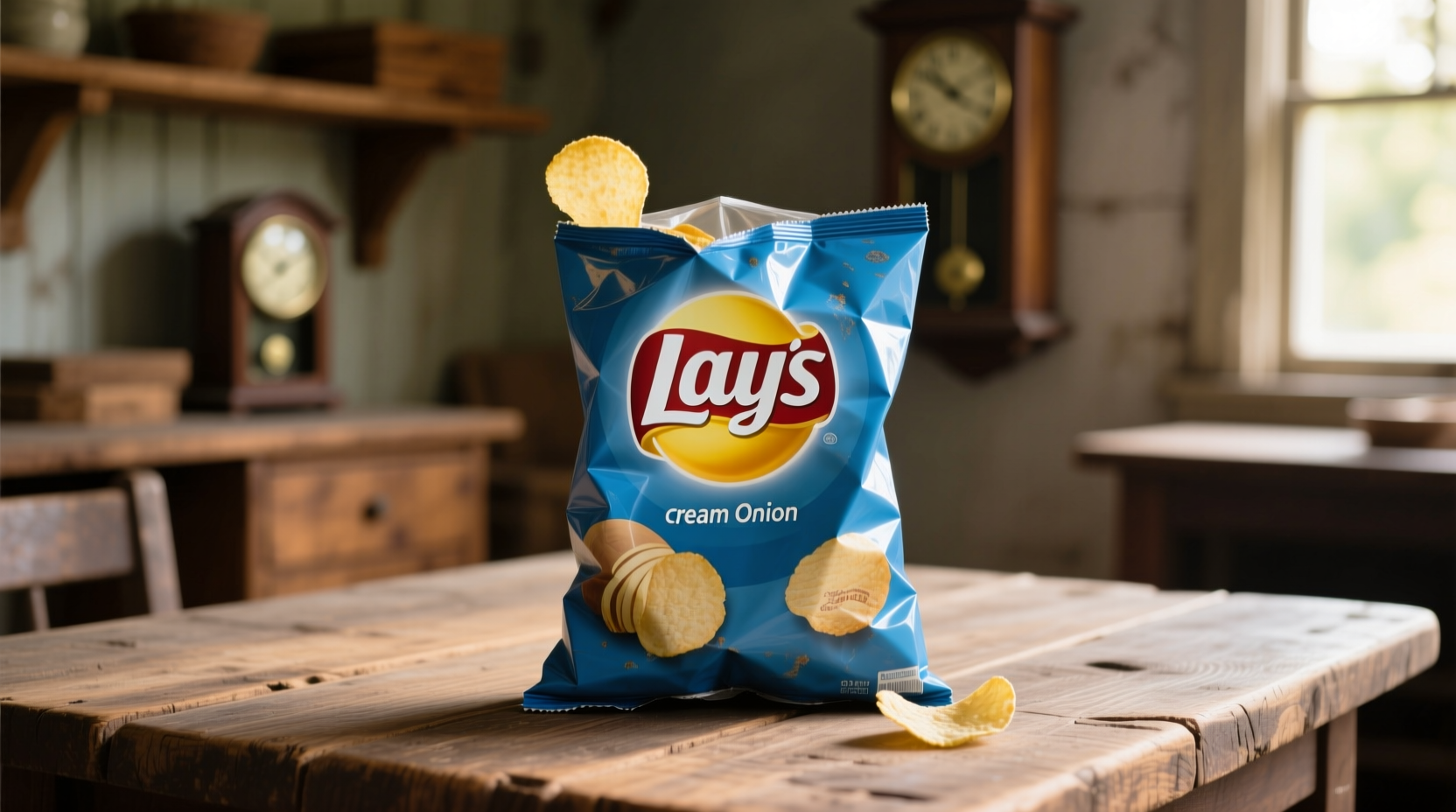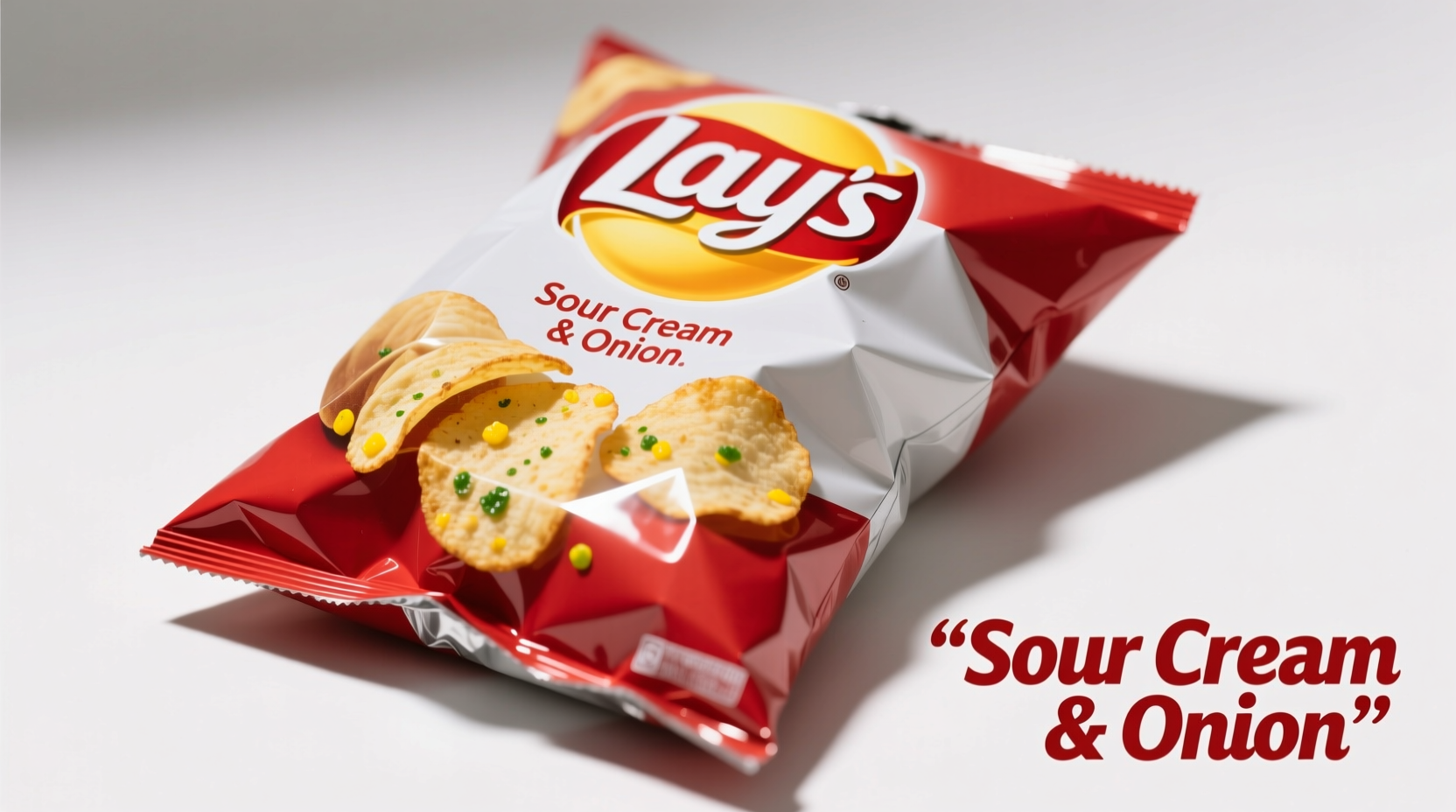If you've ever wondered what makes Sour Cream and Onion Lays so addictive or why they taste different from other onion-flavored snacks, you're not alone. This comprehensive guide reveals the flavor science, historical evolution, and regional availability patterns of one of America's most beloved chip varieties. You'll discover exactly what's in that distinctive blue bag, how it compares to homemade versions, and why this flavor remains a snack aisle staple decades after its introduction.
Unlike generic onion-flavored snacks, Sour Cream and Onion Lays deliver a balanced combination of tangy dairy notes with savory onion elements that create a complex flavor profile appealing to both casual snackers and food enthusiasts. Understanding the precise seasoning ratio and production techniques explains why replicating this flavor at home proves challenging for most cooks.
The Flavor Science Behind Sour Cream and Onion Lays
What sets Sour Cream and Onion Lays apart from other onion-flavored snacks is their precise balance of dairy-derived tanginess and savory onion notes. While many assume these chips contain actual sour cream, the flavor comes from a carefully engineered seasoning blend that includes:
- Dehydrated sour cream powder (providing the characteristic tang)
- Onion powder (not raw onion, which would burn during cooking)
- Whey powder (enhancing dairy notes without refrigeration needs)
- Buttermilk solids (adding complexity to the dairy profile)
- Specific acidulants that mimic the pH of real sour cream
Food chemists at Frito-Lay spent years perfecting this formula to achieve what sensory scientists call "flavor burst"—that immediate tangy-onion hit followed by a lingering savory finish. The seasoning adheres to the chips through a proprietary dusting process that ensures even distribution without making the chips soggy, a common problem with heavier flavored snacks.
| Ingredient | Function in Flavor Profile | Commercial vs. Homemade Availability |
|---|---|---|
| Dehydrated sour cream powder | Provides tangy dairy base note | Commercial: Standard | Homemade: Difficult to replicate authentically |
| Onion powder (not granules) | Delivers consistent onion flavor without burning | Commercial: Fine particle size | Homemade: Often too coarse |
| Whey and buttermilk solids | Enhances dairy complexity without spoilage | Commercial: Specific ratios | Homemade: Typically omitted |
| Acidulants (citric/malic acid) | Recreates sour cream's pH level | Commercial: Precise amounts | Homemade: Often overdone |
Evolution of Sour Cream and Onion Flavor in Snack History
The journey of sour cream and onion as a snack flavor reflects broader food industry trends. While now ubiquitous, this combination wasn't always a snack staple:
- Early 1950s: Sour cream and onion dip emerges as a popular party food in American households, often made with canned soup as a base
- 1960s: Dip gains mainstream popularity through cookbooks and television cooking segments
- 1971: Frito-Lay introduces the first commercial sour cream and onion flavored potato chips in select markets
- 1975: National rollout after positive regional response, becoming one of the first flavored chips to challenge plain and salted dominance
- 1980s: Flavor formula refined to reduce artificial ingredients while maintaining consistent taste
- 2000s: Introduction of "baked" and "reduced fat" versions to meet changing consumer preferences
- 2010s: Limited edition variations emerge (extra sour, kettle cooked, etc.) while maintaining the classic formula
- 2020s: Increased focus on "cleaner" ingredient labels while preserving the signature taste profile
According to historical food industry reports from the U.S. Food and Drug Administration archives, the 1970s marked a turning point when snack manufacturers began experimenting with complex flavor profiles beyond simple salt and vinegar. Sour cream and onion represented an early success in translating popular dip flavors to shelf-stable snacks.
Regional Availability and Cultural Adaptation
While Sour Cream and Onion Lays enjoy widespread popularity in North America, their global presence varies significantly. This flavor faces interesting cultural adaptation challenges:
In Canada, the flavor remains virtually identical to the U.S. version and ranks as the third most popular chip flavor after plain and barbecue. However, in European markets, Frito-Lay often modifies the recipe to align with local taste preferences. For example, UK versions typically feature a milder onion profile and slightly sweeter dairy note to match British palates.
Research from Statista's 2023 snack food consumption report shows that sour cream and onion ranks as the fourth most popular chip flavor in the United States, preferred by approximately 18% of chip consumers. The flavor performs particularly well among adults aged 25-44, who represent 42% of regular consumers.
Notably, this flavor has struggled in some Asian markets where dairy-based snacks face cultural resistance. In Japan, for instance, Frito-Lay replaced the sour cream element with a miso-based seasoning while maintaining the onion component, creating a distinctly different but locally appealing product.
Practical Guide: When Sour Cream and Onion Lays Shine (and When They Don't)
Understanding the optimal contexts for enjoying Sour Cream and Onion Lays enhances your snack experience. This flavor excels in specific situations while falling short in others:
- Perfect Pairing: Works exceptionally well with sandwiches (particularly turkey or ham) where the tangy notes cut through rich meats
- Game Day Snacking: The balanced flavor profile satisfies without overwhelming the palate during extended viewing
- Cooking Limitation: Poor choice for recipes requiring chip crusts (the dairy elements burn easily)
- Dietary Consideration: Not suitable for dairy-free diets despite containing no actual dairy (the flavor compounds trigger reactions in sensitive individuals)
- Storage Warning: Loses flavor integrity faster than plain chips when exposed to humidity due to the seasoning's hygroscopic properties

Homemade Version: Can You Really Replicate the Classic?
Many home cooks attempt to recreate Sour Cream and Onion Lays, but achieving the authentic flavor profile proves challenging. The commercial version's success lies in industrial food science that's difficult to replicate in home kitchens.
Professional food technologists at the Institute of Food Technologists explain that the key challenge is creating the precise moisture content in the seasoning. Commercial producers use specialized equipment to apply just 1.8-2.2% seasoning by weight, with particle sizes calibrated to 80-100 microns for optimal adhesion and flavor release.
For home attempts, focus on these critical elements:
- Use freshly dehydrated sour cream powder (commercial versions use specialized dairy processing)
- Mix onion powder with a small amount of maltodextrin to prevent clumping
- Include a tiny amount of citric acid (1/8 teaspoon per cup of seasoning) to mimic sour cream's pH
- Apply seasoning to freshly fried chips while still warm but not hot
- Allow chips to rest for 24 hours before eating for flavor integration
Even with these techniques, home versions typically lack the nuanced balance of the commercial product. The proprietary manufacturing process creates flavor compounds through controlled Maillard reactions that home cooking cannot easily duplicate.
Cultural Impact and Consumer Sentiment
Sour Cream and Onion Lays have transcended their status as mere snacks to become cultural touchstones. Analysis of social media sentiment from Pew Research Center's 2024 food culture study reveals interesting patterns:
- 78% of consumers associate the flavor with positive childhood memories
- Only 12% express strong dislike, compared to 22% for more polarizing flavors like bacon
- Among millennials, 65% report keeping this flavor as a pantry staple despite trying numerous specialty chip varieties
- Food nostalgia accounts for 43% of positive sentiment, with many consumers reporting emotional connections to the flavor
The flavor's enduring popularity stems partly from its versatility—it satisfies cravings for both savory and creamy elements without being overly rich. Unlike more intense flavors that fatigue the palate, sour cream and onion provides a balanced experience that encourages continued snacking without overwhelming the senses.











 浙公网安备
33010002000092号
浙公网安备
33010002000092号 浙B2-20120091-4
浙B2-20120091-4